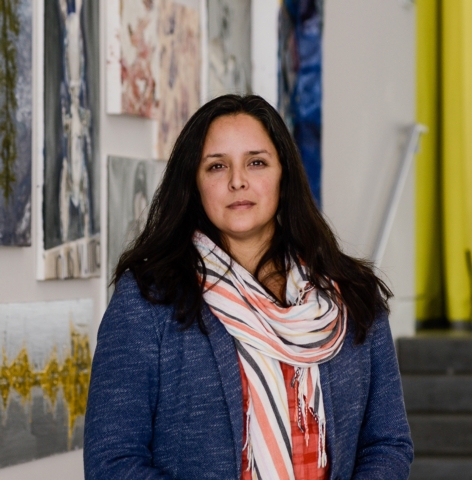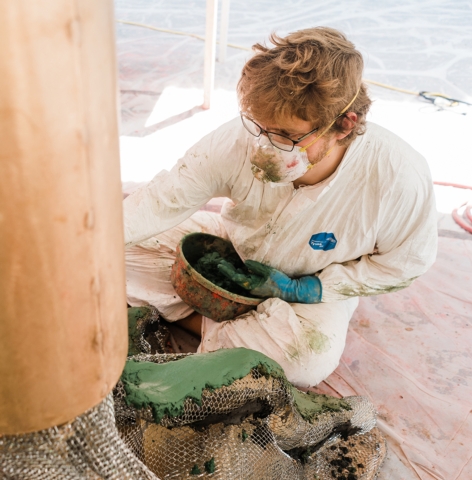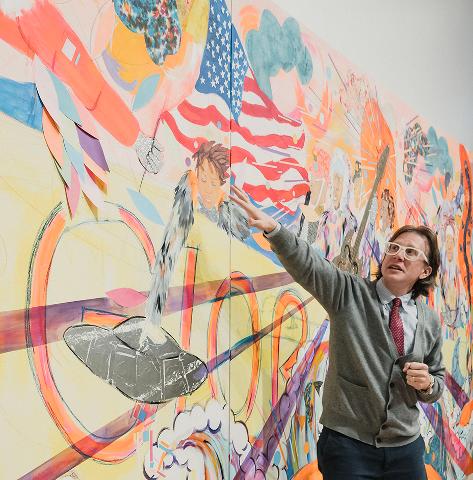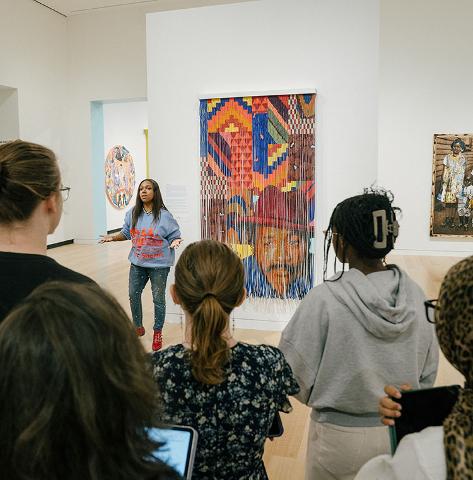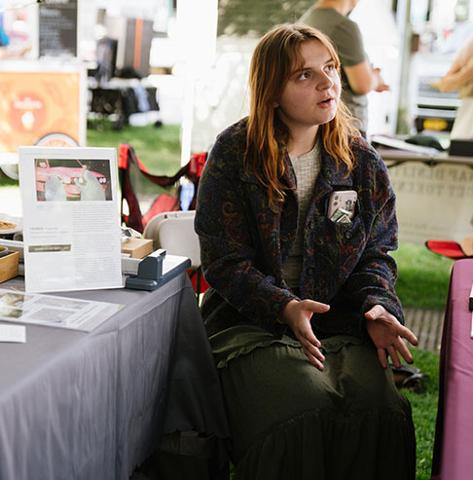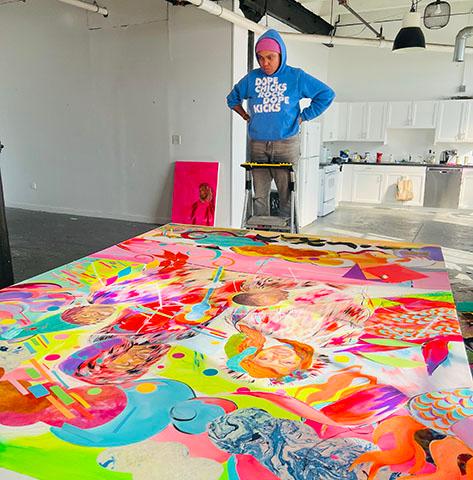Janelle Rodriguez
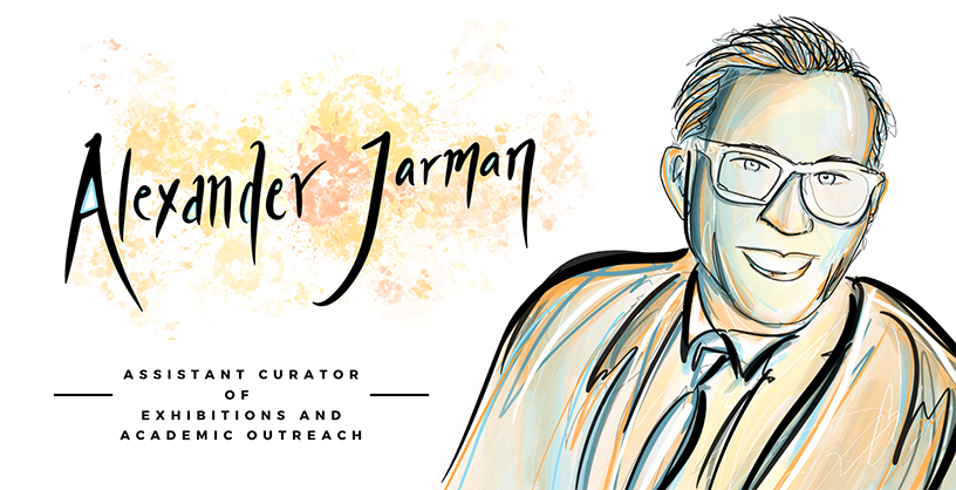
Alexander Jarman is the new Assistant Curator of Exhibitions and Academic Outreach who recently joined the Wellin family! I had the privilege of interviewing Alexander for the blog this month, where we discussed everything from his role at the Wellin to the story behind his iconic white glasses.
What is your role at the Wellin?
A.J: My role here starts with helping the Director, Tracy Adler, in all different facets of the exhibitions. Sometimes that is mundane work -- checking the labels, working on programs, making sure we get the exhibitions right in terms of the information and the look of them. The other half of my job as an academic liaison can be boiled down to: “Ok, you have an interesting show in mind, but how can you convince others that this is interesting and make them care?” The semester is always busy, crammed full of stuff, so it is my job to convince others to spend time at the museum and teach from our objects. It’s more than just reaching out and telling the community that we have an exhibition. I need to make it easier for professors and teachers to believe that coming to the Wellin and using the works of art to teach from will enrich their courses.
Could you describe some of your past experiences and how you got here?
A.J: Something I like to talk about in terms of my journey is the idea of just showing up and expressing your passion no matter what. I was in graduate school at San Diego State University and I was an unpaid intern in the library archives at the museum. I was fortunate that I was able to use my time that way and I didn’t have to worry about being compensated because I was in graduate school. Through that unpaid internship, I was able to get a paid fellowship at the same museum a year later. The fellowship went well, and that led to my first real job at the San Diego Museum of Art where I was the manager of public programs. From there, I was able to start curating performance art at the museum. I was there for around seven years, working on public art, performance art, and public programming. This led to the job offer from the Walters Art Museum in downtown Baltimore, Maryland. Here, I was still working with community groups and working on some adult education programs, but the Walters let me curate physical shows, so I had the chance to put photographs, paintings, and sculptures into spaces. The ability to curate physical spaces at the Walters is what I believe allowed me to end up in this position at the Wellin. Positions at smaller institutions like the Wellin are essentially hybrid, so having the experience I did at my two previous institutions helped make me the right candidate to be here.
What is one advice you would tell your old self
A.J: Patience. Art museums typically move at a bit of a slower pace, while the contemporary art world is always moving 100 miles an hour. I think that on my worst days, I would get caught up in this notion that we had to move on working with an artist quickly or rush a project to execution very quickly because it felt like there was a pressure, not to always be the first at working with an artist, but to prove that the institution was dialed into the contemporary art scene. In the end, my resume may show that we did do a project with the artist, but we didn’t do something that was the most effective or the best use of the artist’s time. I think it is well known that curators have no shortage of ideas, but having the patience with yourself to take a critical look at whether those ideas are right for your institution or your audience is a difficult thing to do and something that I am still working on.
What is your favorite “spot” in the Wellin?
A.J: I love the lounge. We have those great Jeffery Gibson shades, and I usually go over there to give myself a change of scenery after being in my office all day. It’s always nice to go by the large windows where the light is always changing. You also frequently run into somebody, some I’ve never met before, and I’ve had some of my favorite conversations in that space. For the staff, one of the best spots is the loading dock. That’s where a lot of people go out to take a break, drink a cup of coffee, and get some fresh air. I’ve had some great 15 min coffee breaks there where I had the opportunity of getting to know my colleagues, talking about what they like to make for dinner or what restaurants they go to in Utica.
What is your favorite artwork in the Wellin?
A.J: In terms of the permanent collection, I love Frohawk Two Feathers. His real name is Umar Rashid, but he adopted this persona to make a large body of work that explores the effects of imperialism and power on marginalized groups. I’m also very excited that we will be getting a Roberto Lugo ceramic in our collection. I was able to do a show of Roberto’s work down in Baltimore, and over the course of those years preparing the show I got to know him pretty well. He would be in Baltimore for a site visit, and we’d go out at night and go to freestyle/hip hop events where he’d get on stage and do a verse for everyone. I love that guy, and I’m really excited that the Wellin will have his work in our collection. In the current show, I think that RYAN! Feddersen’s piece about Indian Boarding Schools is going to be very successful. What I love about her work is that she was able to make a conceptual piece of art that people are still going to enjoy interacting with. It’s also a piece that deals with a very dark but important part of our national history. When you look at it, you can also think of this work as a primary historical document. RYAN! Feddersen has done this installation three times, each time conducting more research and looking at more schools. It is a generative artwork where it collects more and more information, trying to piece together these little parts of history and putting them into one central database.
What is your go-to opus order?
A.J: I would say that either Opus or Euphoria can always tempt me with a wrap. I find that wraps are very divisive in the world: some people love them, some people think that they are the bastardized version of a sandwich. I personally think wraps are the best inventions ever and I could always go for a barbeque chicken wrap!
Your white glasses are so iconic! Is there a story behind them?
A.J: When I was living in San Diego, I had a pair of blue glasses, green glasses, orange glasses, etc. But when I wore the white glasses, people would tell me that they remembered seeing me somewhere. Somehow these white glasses really stuck out in people’s minds. Since it was a time in my life where I was frequently working with community programs, I felt that as someone who is representing an institution, being present at community meetings, fundraisers, events and being remembered, even if it was just “that museum guy with the white glasses,” was a way for me to show the museum’s support for these communities with my own two feet. So the white glasses didn’t start out as any form of vanity, but it helped me become a more recognized fixture in the communities where I was working.
Image Credit: Graphic portrait by Nanka Suzuki '20.


